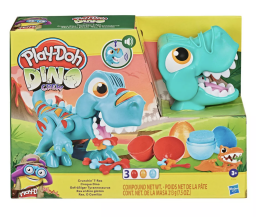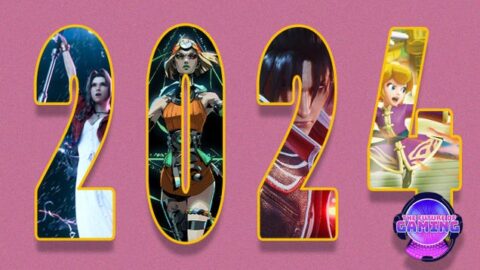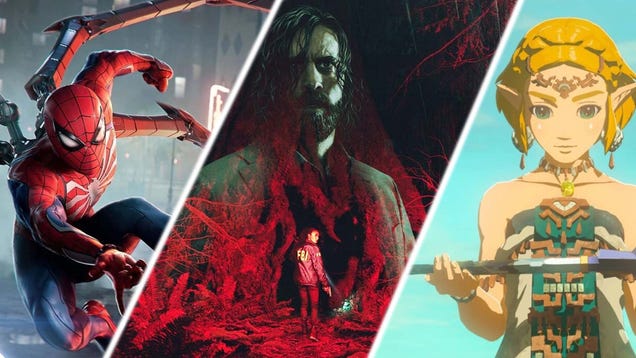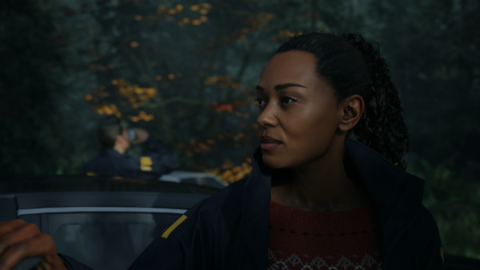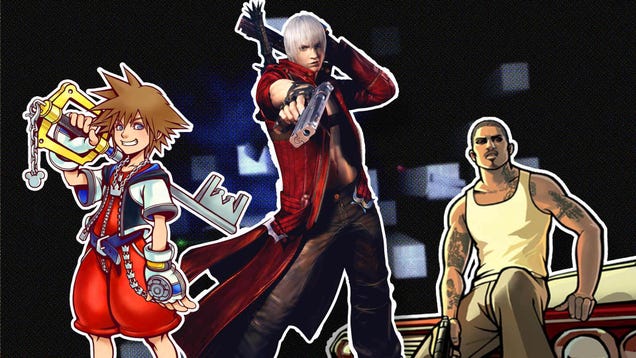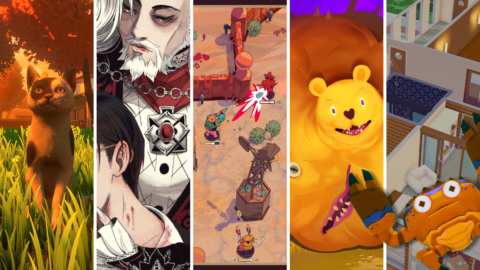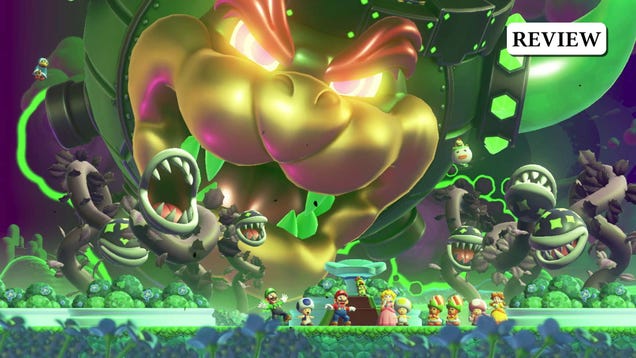Here’s some of the most interesting upcoming indie games at SXSW Sydney, including “The Dungeon Experience” and “Drag Her!”

The inaugural SXSW Sydney took place this October, taking the famous tech, film, music, and games festival international for the first time ever. It was already a big month for video games in Australia, with the Melbourne International Games Week and PAX Aus ending just seven days prior.
Fortunately, many exhausted independent game developers still made their way to SXSW Sydney to show off what they’ve been working on.
In no particular order, here are some of the most interesting upcoming games we checked out at SXSW Sydney.
1. The Dungeon Experience
If you were on gaming TikTok back in 2021, there is a non-zero chance you encountered a gameplay clip of someone examining a rather vocal crab, or offering an ingenious solution to the issue of how to approach feet in first-person games. This is that game.
Developed by Australian studio Bone Assembly, The Dungeon Experience positions you as an intrepid adventurer taking part in the titular experience: a fantasy-themed role playing attraction that’s like if an escape room and a LARP had a very weird baby. Unfortunately, the whole thing is run by a single enterprising crab on a very tight budget, who may or may not be trying to rope you into a multi-level marketing scheme.
This fully voice-acted experience draws inspiration from The Stanley Parable, and unapologetically leans into the absurd as your friendly crab guide continually promises you the elusive treasure of Financial Freedom.
The Dungeon Experience is scheduled for release when “the four moons of Xogris align and the Messiah Khidrius returns.” So basically, within the next year or two.
2. Drag Her!
U.S. developer Fighting Chance Games raised over $75,000 on Kickstarter to bring this fabulous fighting game to life, and it’s easy to see how. I mean, it’s drag queens fighting each other. What more do you want?
Drag Her! is a 2D side-scrolling fighting game featuring a cast of real drag performers, including famous names such as Kim Chi, Laganja Estranja, and Alaska Thunderfuck 5000 (all officially licensed, of course). Each drag queen is transformed into a cartoon fighter with her own arsenal of creative and thematically-appropriate attacks, which somebody appears to have had a lot of fun naming.
Drag is, by nature, a performance art centering on exaggeration, which means Drag Her!‘s embellishment of these personas gives it a lot of room to get creative. The real Alaska Thunderfuck 5000 probably isn’t an alien from Planet Glamtron, nor is Kim Chi seven feet tall and capable of conjuring pancakes out of thin air. I’ve never met them though, so who knows.
You can also change up characters’ outfits by swapping their colour palette, and the health bars are lipsticks. Fabulous.
3. Drăculești
Drăculești, or “the gay Dracula game,” is exactly what it sounds like. In this beautifully illustrated visual novel from Australian-based Fine Feathered Fiends, you play as Roger M. Renfield, a timid lawyer visiting Vlad Dracula’s estate on business. Unfortunately, your fragile mental health takes a further hit when you discover the castle’s occupants are much more villainous than they first appeared.
Though Drăculești is far from the first media to romanticise Dracula, it does distinguish itself by not even pretending your blood-sucking love interest is in any way a good person. The game might even test the question of how far you would go for love, with the developers stating that Renfield will have to participate in some pretty awful acts to attract Dracula’s interest.
That will probably just heighten the appeal for some people. Fortunately for those who can’t bear to be mean to video game characters, Drăculești will have three alternative potential love interests in case you need to bail on Dracula’s route. In addition to your host, players can romance the mysterious Ghost, Dracula’s second bride and aspiring divorcee Cez, or your comparatively normal boss Jonathan Harker.
4. Hotel Magnate
Hotel Magnate brings together elements from The Sims and Two Point Hospital to create a hotel management simulator featuring extensive decor customisation. It’s an undeniably attractive idea, but also an incredibly ambitious project.
Developed by Australian studio Arcade Oven, Hotel Magnate puts you in charge of managing a hotel. This includes building new rooms and facilities, hiring and assigning staff, and meeting guests’ demands to ensure they leave a favourable review. Their room might not have had a mini-fridge when they booked it, but they’ll certainly be unhappy if it doesn’t have one when they leave.
A lot of work still needs to be done on this game, with the developers still adding features and tweaking the gameplay. The demo build Mashable tried had several bugs to iron out, and the information displays could be confusing. But if you’re a fan of management sims, this might be one to keep an eye on to see how it develops.
Hotel Magnate is currently out in early access.
5. Winnie’s Hole
A former colleague advised me to check out Winnie’s Hole, stating that it seemed right up my alley. He wasn’t wrong, but it’s a very concerning statement about my vibes.
Winnie’s Hole is a horror-themed strategy game from Australian studio Twice Different, in which you play a virus invading the gut of lovable public domain character Winnie the Pooh. By stringing together tetrominoes through Pooh Bear’s internal organs, players spread and gather upgrades to grow stronger, while also mutating your remarkably blasé host’s physical appearance.
These mutations later come in handy when Winnie’s frightened and concerned friends attempt to address the teethed hole in his rumbly tummy — not to mention the many extraneous limbs and eyes he has grown.
Like a messed up deckbuilder, Winnie’s Hole allows players to curate a collection of mutations with effects that complement each other. As such, Pooh will look different in every run, as the upgrades you choose dictate whether he’ll sprout a new limb, eye, or bulging tumour.
Winnie’s Hole is scheduled to be released in early access this year.
6. Crab God: Mother of the Tide
Sometimes video game titles give little indication of what it’s actually about. Crab God: Mother of the Tide is not one such title. You are crab, you are god, and you are mother.
Developed by Australian studio Chaos Theory Games, Crab God: Mother of the Tide draws influence from Kingdom and Reus, positioning you as the titular Crab God watching over your crab babies. Hatching your children and putting them to work, you direct your colony to destroy invasive plants, plant native species to attract other sea life, and gather enough resources before time is up to safely move on to the next area. Fail, and you may have to sacrifice some of your children for the greater good. Crabs for the Crab God.
Your aim is to gradually take your colony from the Great Barrier Reef down to the Mariana Trench, with your children growing and ageing with every move. Personally, if I’d gone through all the trouble of making my little patch of ocean so nice, I’d rather stick around for a bit. At the very least I wouldn’t move on before I’ve hoarded enough food to enable all my children to survive the trip. But that’s just me.
Crab God: Mother of the Tide includes real oceanic species, which is an interesting touch but can make it difficult to differentiate between invasive and native species (it turns out that green doesn’t automatically mean good). The developers are still working on it though, so hopefully things are a bit clearer when the full game is released.
7. Enter the Chronosphere
Enter the Chronosphere sits at an interesting place between a real time strategy game and a turn-based one. The top-down bullet hell from Australian studio Effort Star uses similar mechanics to SUPERHOT, in that time only moves when you do. This means you’re often given a nice long moment to contemplate your choices just before you bite the dust.
The sci-fi roguelike tasks you with saving the universe by disabling the titular chronospheres: round, multi-levelled structures that twist time and threaten reality. But in order to do so you must fight your way through them, with each chronosphere featuring different biomes that include varied assortments of weapons, enemies, and items.
Let’s be real though — the story is second to the gameplay on this one. Enter the Chronosphere lets players choose from an eclectic cast of mostly alien characters, each with their own special abilities, and pick up different weapons and upgrades to figure out what play style best suits them. Simply spraying and praying won’t cut it here, with thoughtful action your best bet at making it out alive.
Fingers crossed the final game will let you rewatch your run in real time after you’ve finished, so you can pretend you were much cooler than you actually were.
For a better idea of the gameplay, you check out Effort Star’s earlier, browser-based version of Enter the Chronosphere for free on itch.io.
8. Copycat
In comparison to our neverending capitalist rat race hellscape, the lazy life of a cat seems downright luxurious. That doesn’t mean cats don’t have their own problems to deal with, though.
Narrative game Copycat puts you in the position of Dawn, a shelter cat who ardently believes she belongs in the wild. Adopted by an older Australian woman named Olive, Dawn slowly begins to bond with her, learning that life as a housecat isn’t all that bad. However, a mix-up eventually puts Dawn on the street with an imposter in her place, leaving it up to her to find her way back home.
This feline-themed walking simulator from Australian developer Spoonful of Wonder is fully voice-acted, which means you can tell it’s set Down Under from the moment Olive opens her mouth. Copycat targets your softer emotions, aiming to reflect on love, loss, and the meaning of home. There’s also a cat wand minigame.
9. Lil’ Guardsman
If you enjoy the bureaucratic gameplay of Papers, Please but want something less soulbreakingly grim, Lil’ Guardsman might just fill that paperwork-shaped hole in your heart.
Lil’ Guardsman follows Lil, a 12-year-old living with her father in a retro fantasy world of cassette players and elves. Unfortunately, her dad would rather gamble than perform his duty as a city guard, leaving it up to Lil to gaslight, gatekeep, and girlboss in his stead. This involves questioning anyone who tries to enter the city, and making the call on whether or not to admit them, turn them away, or even jail them. You know, normal kids’ responsibilities.
Despite the child labour, Canadian studio Hilltop Studios‘ deduction game is a friendly, lighthearted experience that doesn’t take itself too seriously, and boasts a tonally appropriate art style reminiscent of a Saturday morning cartoon.
Lil’ Guardsman is currently planned for release in 2023.









